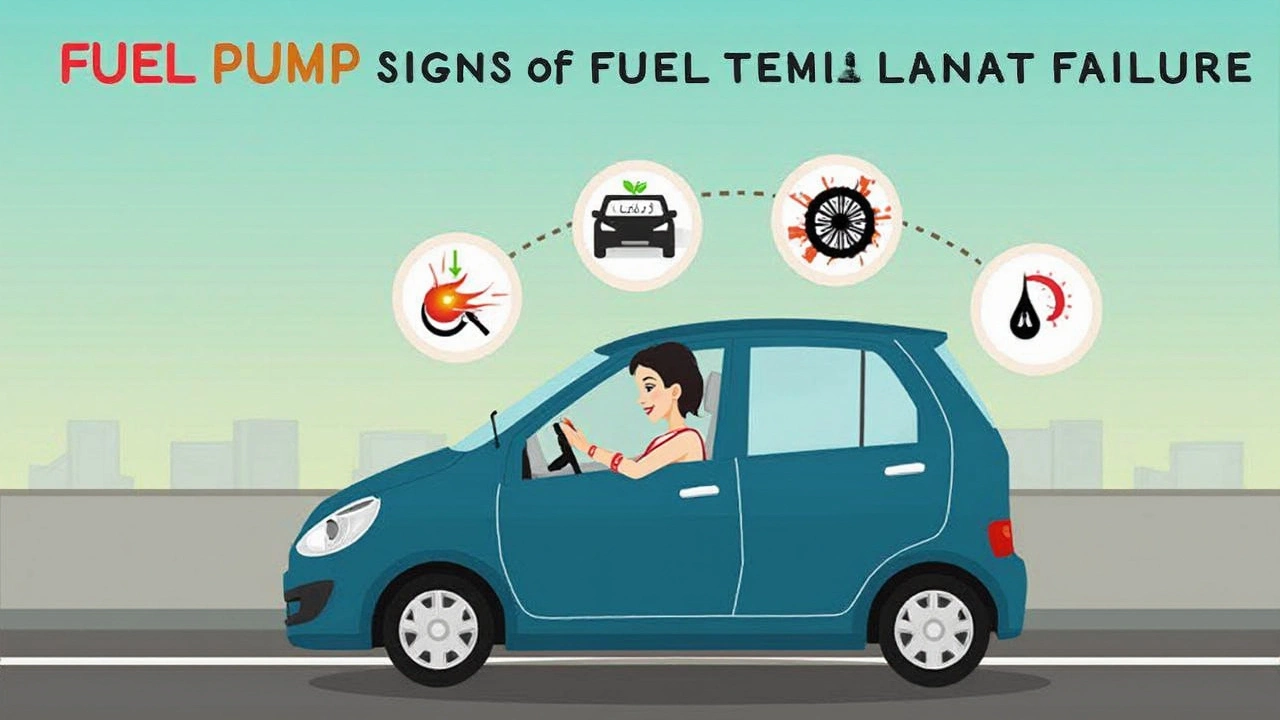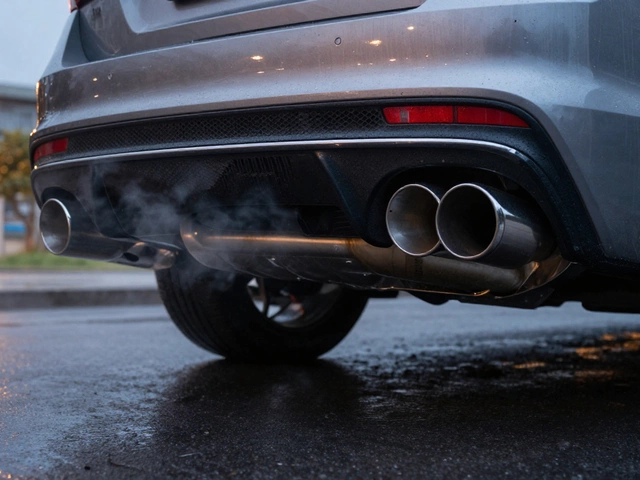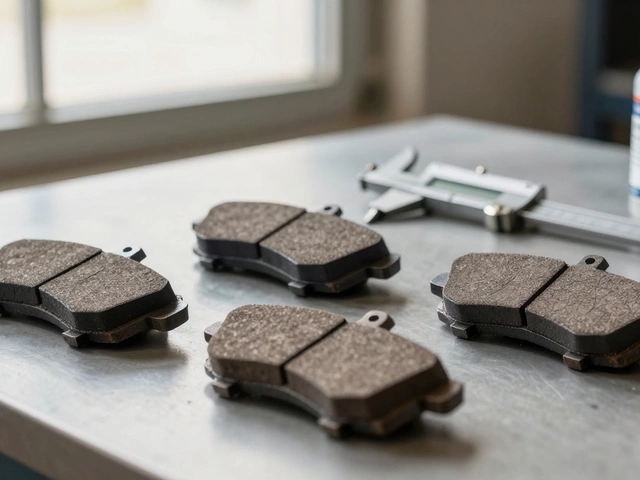Your car might be spotless, and maybe you even remember to change the oil on time, but the second your fuel pump quits, none of that really matters. If your ride depends on gas, that little pump inside your tank is what keeps the engine alive. When it goes out, you won’t be going pretty much anywhere—at least not under your own power.
People sometimes wonder if you can limp home or to a repair shop if the fuel pump bites the dust. Truth is, most times you’re not going to get far, if you can even get the engine to turn over at all. The fuel pump’s job is simple: get gas from the tank to the engine. When it fails, your engine can’t get fuel, and it stalls or just won’t start—even if you slam the key in the ignition like you mean it.
- What Does a Fuel Pump Do, Anyway?
- How a Bad Fuel Pump Feels Behind the Wheel
- How Far Can You Go—If At All?
- What To Do If Your Fuel Pump Dies on the Road
- How to Spot and Prevent Fuel Pump Problems
What Does a Fuel Pump Do, Anyway?
Think of the fuel pump as the heart of your car’s fuel system. It's buried inside most gas tanks and has one job: push fuel out of the tank and send it under pressure to the engine. No fuel getting through? The engine just sits there like a lump.
Pretty much all cars since the 1980s use electric fuel pumps, which are a major upgrade from the old mechanical versions. With modern engines, you need a steady, strong fuel supply. You can’t count on gravity—a pump is the only way the gas is making it out of that tank and into your engine’s injectors.
Here’s the basic journey of your gas, step by step:
- Fuel pump pulls gas from the tank.
- It shoots the gas under pressure through the fuel lines.
- Fuel makes it to the fuel injectors, which spray it straight into the engine’s cylinders.
- Your spark plugs set things off, the engine runs, and you move.
If none of this happens, it’s usually the fuel pump or something tied to it. It’s surprisingly common—a 2023 report from CarMD listed fuel pump failure as one of the top 15 reasons for breakdowns in the U.S.
"A failing fuel pump cuts off the lifeblood of the engine. Without that pressure, the engine can’t run, period." — CarMD Technical Team
Another thing: today’s fuel systems are all about tight tolerances. If your pump gets noisy, your car starts hesitating, or you smell fuel, the pump could be struggling. Don’t wait for it to totally croak—you’ll be stuck and searching for a tow.
How a Bad Fuel Pump Feels Behind the Wheel
If you’ve ever been cruising and suddenly felt your car sputter or hesitate, your mind might jump straight to the worst-case scenario. A bad fuel pump makes itself known in a few obvious—and seriously annoying—ways. You don’t need to be a mechanic to notice something’s off.
The clearest warning is trouble getting your car started. Maybe it fires up after cranking forever, or maybe it just groans and gives up. If you’ve got a newer car with a fuel pressure warning, you might see that dreaded light, but most folks just notice weird symptoms, like:
- Sudden loss of power—especially if you’re trying to speed up or climb a hill. The car feels weak, like it’s running out of steam.
- The engine stalls, sometimes just out of nowhere, even at stoplights or while driving steady.
- Jerking or surging—your ride might lurch forward or hesitate as if it can’t decide how much gas to send to the engine.
- Unusual whining or humming from the back of the car—some pumps get loud before they fail completely. If you hear more noise from the back than your dog Max does at dinner, pay attention.
Once, Felicity and I were headed out with Max and got stuck at an intersection. The car stalled, wouldn’t fire back up, and acted like it was starved for gas despite having a half-full tank. Turned out, the fuel pump had died—and we got a crash course in what a dead pump really feels like.
If you’re not sure whether the symptoms match, check out this table comparing how a bad fuel pump stacks up against other common breakdowns:
| Symptom | Bad Fuel Pump | Dead Battery | Clogged Fuel Filter |
|---|---|---|---|
| Car cranks but doesn't start | Yes | No | Maybe |
| Stalling at high speeds | Yes | No | Sometimes |
| Engine hesitation or surging | Yes | No | Maybe |
| Loud whining from fuel tank | Yes | No | No |
Bottom line: If your car quits when you push it or acts like it needs a nap every time you idle, it’s probably time to check that fuel pump.

How Far Can You Go—If At All?
Here’s the honest answer: if your fuel pump goes out completely, you’re not going anywhere. Modern cars use electric fuel pumps, which means no fuel gets to the engine once it fails. The engine might cough, stall, or just refuse to start. Sometimes, people think a car with a dying pump can "limp" a few miles, but once it’s dead, you’re stuck right there.
You might get a few warning signs first—a sputter, random stalling, or rough acceleration. If you catch these early, you might be able to get to a safe spot or a repair shop before it completely quits. But don’t count on it; when an electric fuel pump fails, it’s usually game over.
Older cars with mechanical pumps are a tiny bit different. On certain models, the engine might run rough for a short distance if there’s a little fuel left in the carburetor, but it’s a matter of minutes or yards, not miles. Most folks aren’t driving these old rides daily, so if you’re rocking anything built in the last 25 years, once the pump dies, you’re not driving anywhere.
- If your engine stalls and won’t restart, chances are the fuel pump is done.
- Trying to "coast" or force it just burns your starter and wastes time.
- Your best bet is to pull over safely as soon as you sense trouble.
Here’s a quick recap in plain numbers:
| Scenario | How Far Can You Go? |
|---|---|
| Electric pump fails (modern car) | 0 miles |
| Mechanical pump (older car, some fuel left) | Less than 1 mile, usually less than a minute of run time |
| Pump is dying but not dead | A few miles, max—if at all |
If your car won't start or dies on the highway, don’t keep turning the key hoping for a miracle. Call for a tow or roadside help. The sooner you get it checked, the less chance you have of making the problem (and the bill) even worse.
What To Do If Your Fuel Pump Dies on the Road
If your fuel pump gives out while you’re driving, things can get dicey fast. The biggest sign? The engine sputters or loses power out of nowhere, then just dies. You’ll notice right away—you won’t be able to accelerate, and pumping the gas won’t help. It usually happens suddenly, and you probably won’t get much warning.
Here’s what you should do, step by step, if you think your fuel pump has gone out while you’re moving:
- Stay calm and steer safely. Don’t panic. Your car will coast for a short distance. Gently steer toward the shoulder or a safe spot away from traffic. Don’t slam the brakes unless you have to.
- Turn on your hazards. As soon as you start losing power, hit your hazard lights. This warns other drivers something’s up with your car and helps prevent a rear-end collision.
- Try to restart the car. Sometimes the pump isn’t totally dead—it might cough a little more life into the engine for a few feet. Try turning the key, but don’t keep grinding it. If it won’t start after a couple tries, stop—cranking burns out the battery fast.
- Call for help. If you can’t get the engine going and you’re stuck in a lane or a sketchy spot, call roadside assistance right away. Most insurance plans have some form of it, and they’re pros at towing cars with fuel system issues.
- Stay in the vehicle if it’s safer. If you’re on a highway or a busy street, sitting tight with your seatbelt buckled is usually smarter than standing behind a guardrail, unless you spot fire or smoke. Keep your phone close and windows up if you don’t feel safe getting out.
Now, let’s bust a big myth: pouring gas into the tank won’t help if the fuel pump quit. The pump does the heavy lifting, no matter how much gas you’ve got.
If you’re the kind of person who likes numbers, here’s what towing a car due to a fuel pump failure tends to cost across the U.S.:
| Towing Distance | Average Cost (USD) |
|---|---|
| 5 miles | $50–$75 |
| 10 miles | $75–$125 |
| 20+ miles | $125–$200+ |
As much of a pain as it is, don’t let frustration make you do something risky—like trying to push your car in heavy traffic or fiddling with wires under the hood. Play it safe and trust the tow pros. Next time, keeping up with fuel filter changes and paying attention to weird noises up front can save you all this drama.

How to Spot and Prevent Fuel Pump Problems
Catching fuel pump issues early can make the difference between a quick fix and being stranded in a parking lot, waiting on a tow truck. There are a few warning signs that just about anyone can spot if you know what to look for.
- Engine sputters or stutters, usually at high speeds: If your car feels like it’s coughing or hesitating when you’re cruising down the highway, that’s a classic sign. Sometimes you’ll even lose power for a second or two before things smooth out.
- Difficulty starting, especially after sitting: If you have to crank the key longer than usual or push the button more times, your fuel pump may be struggling.
- Sudden stalls—without weird noises: When a fuel system fails, your engine can just stop with almost no warning. It won’t usually bang or grind; it’ll just cut out.
- Whining noise near the gas tank: A healthy fuel pump is mostly quiet. If you hear a high-pitched whine coming from under the back seat or at the rear of the car, that’s a red flag.
- Poor acceleration or loss of power under load: Your car may bog down or feel gutless when you floor it or go uphill, even if everything else seems fine.
Want to keep your fuel pump happy? There are a few things you can do:
- Don’t run your gas tank near empty all the time. The pump relies on fuel for both lubrication and cooling. Going dry heats it up and stresses the pump, making early failure more likely.
- Swap your fuel filter on schedule. A clogged filter makes your fuel pump work extra hard, which shortens its life and can mess up fuel delivery.
- Listen for odd noises. If you regularly hear anything unusual—a buzz, whine, or hum from the rear—have it checked out before your car gets stuck in the driveway.
Here’s a quick look at how often drivers face fuel pump issues based on age and mileage:
| Mileage | Chance of Fuel Pump Failure |
|---|---|
| Under 60,000 miles | Low |
| 60,000 – 120,000 miles | Moderate |
| Over 120,000 miles | High |
One last tip: if you notice sulfur or rotten egg smells, it might not be the pump itself, but fuel problems in general are nothing to ignore. Staying on top of the small stuff—like changing filters and keeping your tank above a quarter full—can save you a bunch of trouble later.











Write a comment